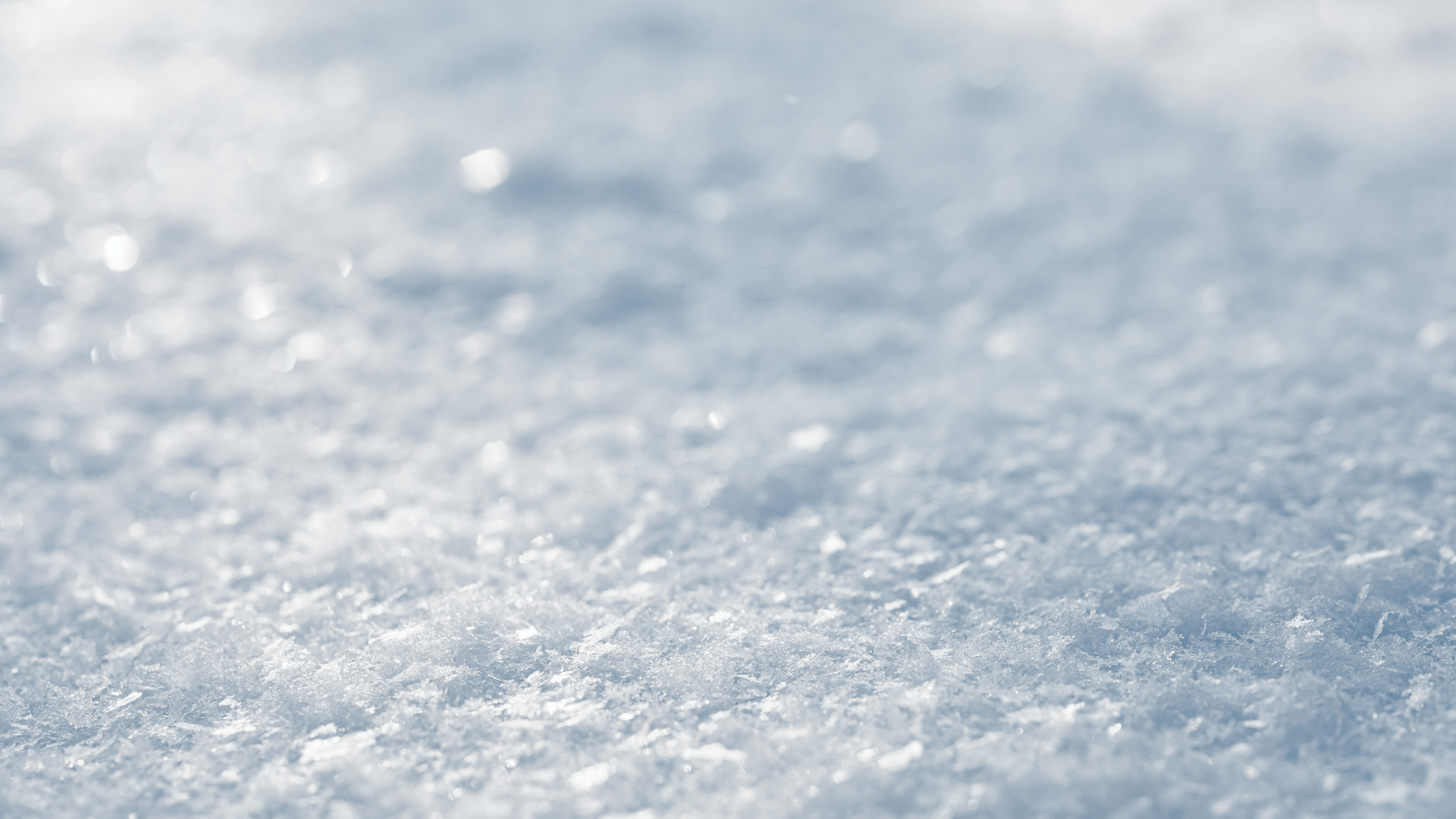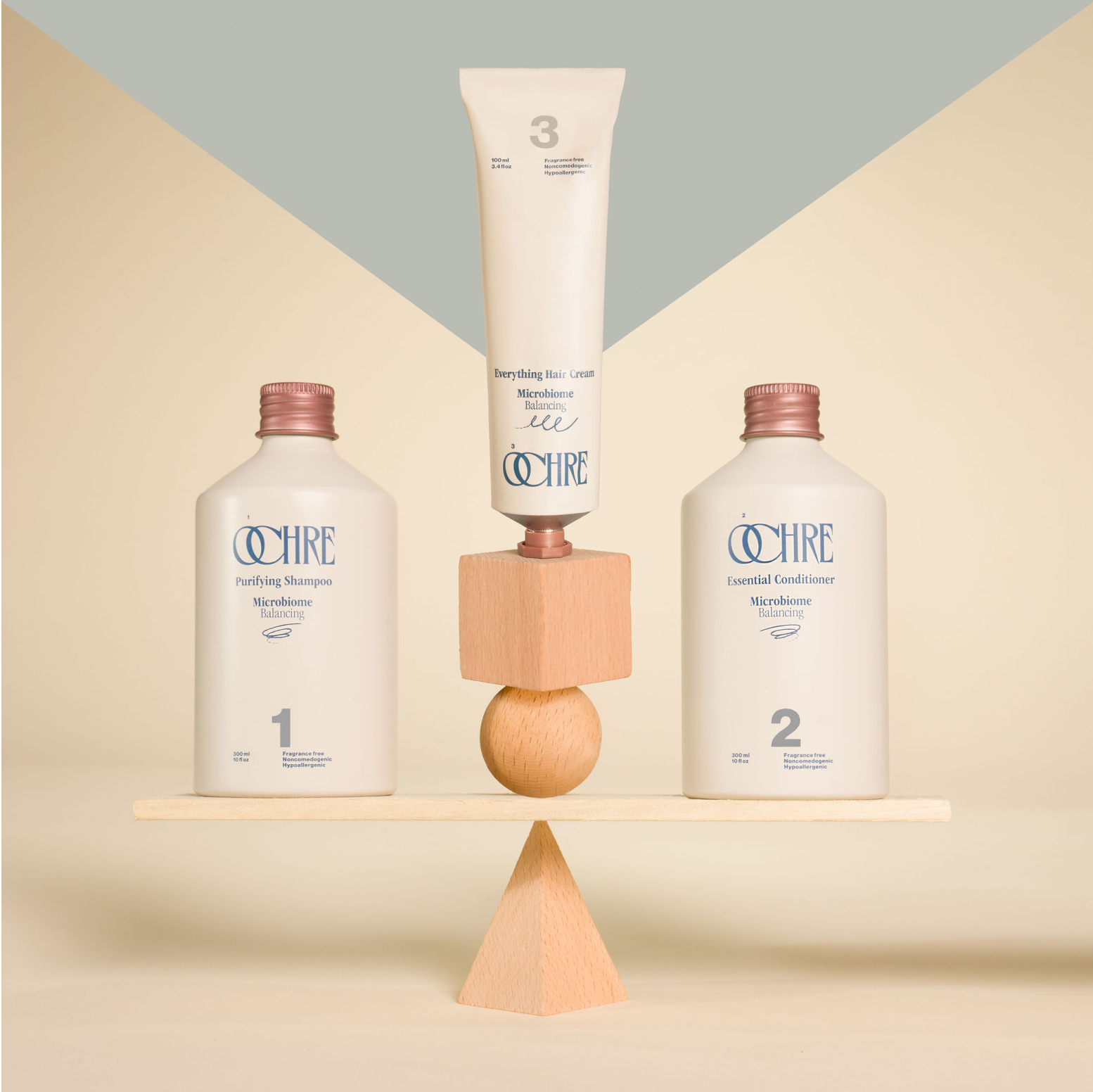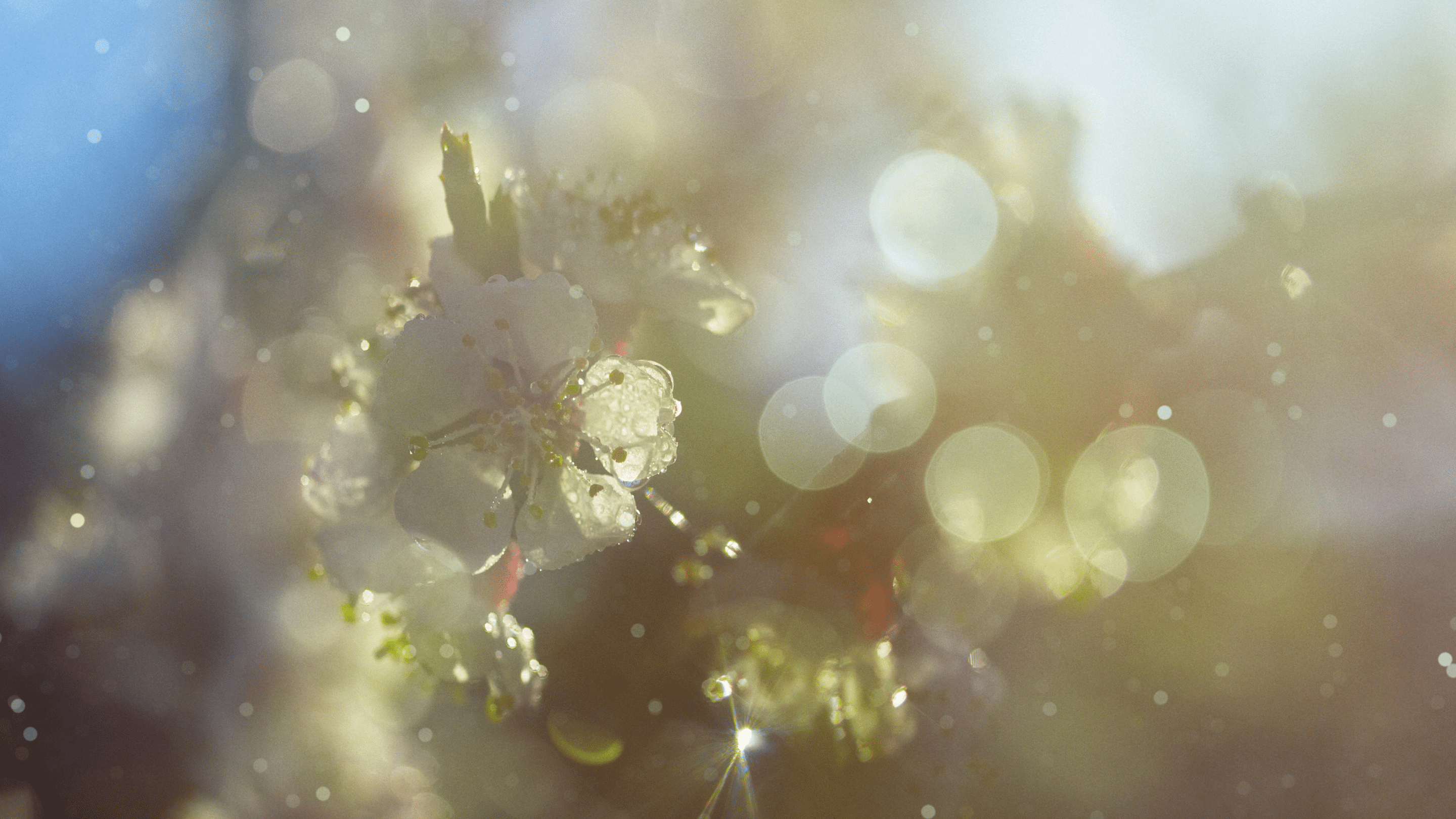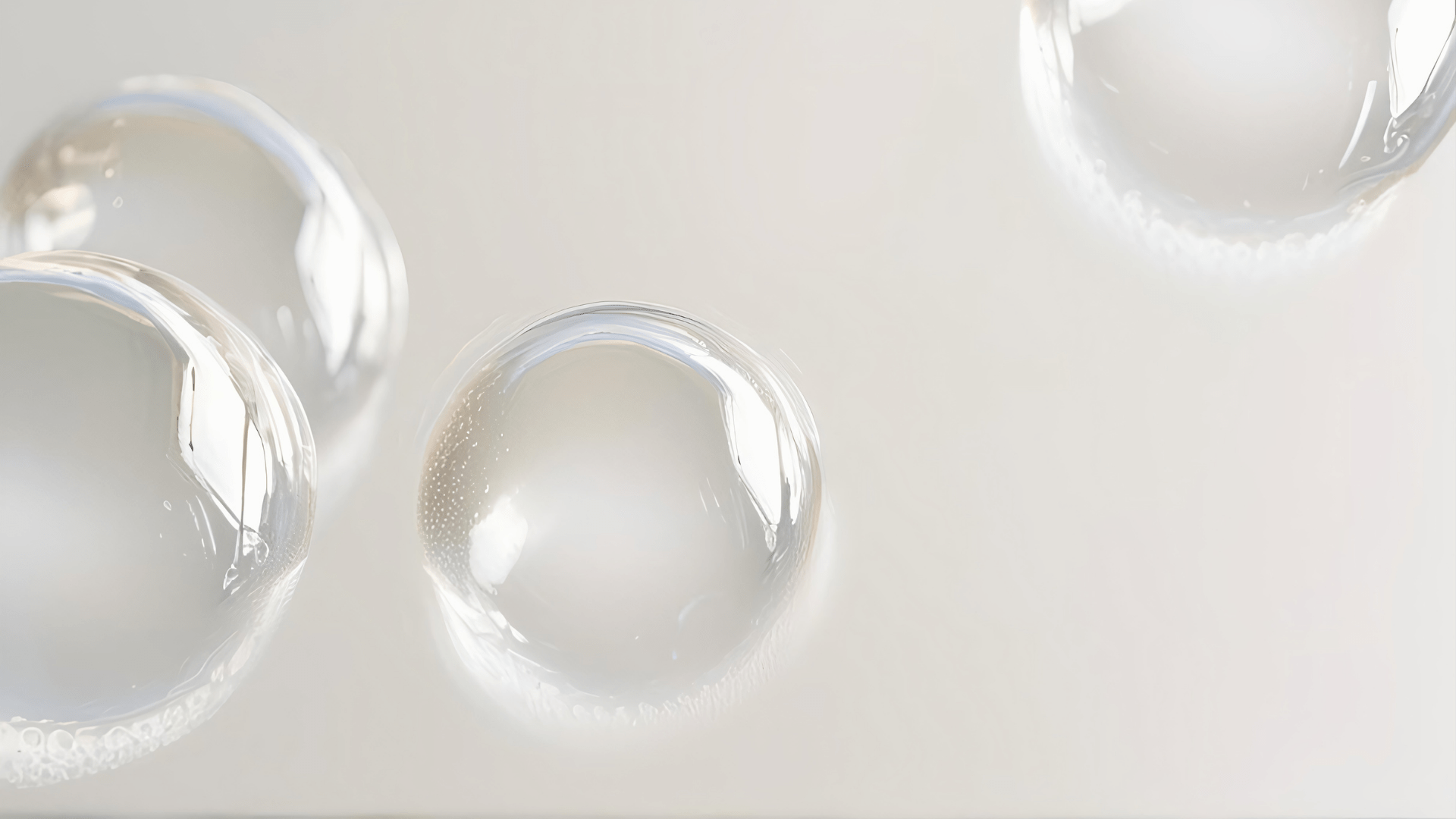
Your Guide to Dandruff and Seborrheic Dermatitis
Reviewed by Dr. Rishu Gupta, MD, and Valerie George, Cosmetic Chemist
Flakes are frustrating – 50% of people experience dandruff at some point, or its more severe cousin, seborrheic dermatitis. While dry skin may seem like the logical cause, current research indicates that the microbiome plays a significant role in dandruff.
Below is our guide to help you learn about dandruff and seborrheic dermatitis are and how to manage it.
What is Dandruff?
Dandruff is a scalp condition characterized by dry, white or yellow flakes accompanied by dry or itchy skin. These flakes are dry pieces of skin that dislodge from the scalp either naturally or by friction.

What is Seborrheic Dermatitis?
Seborrheic dermatitis (SD) is a more severe form of dandruff found on the scalp and other parts of skin that is rich in oil, such as the face or neck. Symptoms can include inflammation, scaly skin, greasy flakes, and persistent itching.

What causes Dandruff and Seborrheic Dermatitis?
There are multiple factors that can trigger dandruff or SD, including:
- High sebum (skin oil) production
- Weakened immune system
- Compromised scalp barrier
- Genetics
- Stress
- Nutrition
- Diet
- Environment (dry, cold, humid, polluted)
But the biggest culprit is a fungus called Malassezia.
What is Malassezia?
Malassezia is a natural part of our skin’s microbiome. It lives where there is higher sebaceous activity (i.e., scalp, face, neck, chest), and uses the oil as a food source. When Malasseiza feeds, it leaves byproducts (fatty acids like oleic and arachidonic) that can irritate our skin
Excessive sebum can cause an overgrowth of Malassezia. In response, our body triggers an immune response that makes skin shed faster. The combination of excessive Malassezia growth and a compromised skin barrier can lead to dandruff.
In addition, bacterial overgrowth may also contribute to dandruff. Recent sequencing technology has uncovered that an overabundance of Staphylococcus (a genus of bacteria) is linked to dandruff. Similar to Malassezia, an overabundance of sebum can cause an overgrowth of harmful bacteria.
How can you manage dandruff or seborrheic dermatitis?
Managing dandruff or seborrheic dermatitis may require a medicated product to treat your skin or scalp. For the scalp, a shampoo containing an FDA approved anti-fungal ingredient may help:
- Zinc Pyrithione
- Ketoconazole
- Salicylic acid
- Piroctone Olamine
- Selenium sulfide
- Coal Tar
For the skin, a hydrocortisone cream or topical steroid prescribed by your doctor can provide temporary relief.
Some natural ingredients have also been shown to provide relief while having less harsh side effects after prolonged use. Some of these ingredients include:
- Tea tree oil (Melaleuca Alternifolia)
- Rosebay extract (Epilobium Angustifolium)
- Jua extract (Zizyphus joazeiro bark)
- Celery seed extract (Apium graveolens)
- Propanediol Caprylate
While medicated products are the go to treatment for dandruff, they may not solve the underlying issue. They can also cause dependency over time as they target both harmful and helpful microbes on your scalp.
Below are 7 additional tips for managing dandruff or SD that don’t require medicated products.
- Avoid irritating ingredients - products full of potentially irritating ingredients, such as fragrances, botanicals oils, and harsh preservatives, can disrupt the skin barrier.
- Limit oily products - products full of oils, esters, and waxes can feed Malassezia (MCT, Squalane, and mineral oil are okay) and cause an overgrowth.
- Avoid pore-clogging products - look for hair care products that are noncomedogenic (non-pore clogging). Clogged pores can trap harmful microbes that trigger dandruff.
- Keep your scalp clean - if you have a very oily scalp, try washing it more frequently. If you have a dry scalp, wash less frequently. The goal is to keep your scalp clean but not irritated.
- Don’t itch - avoid aggressive head scratching throughout the day as it can damage your skin barrier.
- Destress - Try to find ways to destress throughout the day. Stress is a common trigger for dandruff and SD.
- Eat a balanced diet - Increasing research shows that their is a connection between gut health and skin health. Avoiding foods full of sugar, fat, and processed ingredients may improve scalp health.
Finding the right method to manage your dandruff involves a lot of trial and error. It may take a few weeks of using a new product to see progress, so don’t feel discouraged if you don’t see immediate results.
If nothing seems to work for you, consult a dermatologist who can provide a proper diagnosis and prescribe an appropriate treatment.
What we offer at Ochre
We’re a team who has experienced the challenges of acne, eczema, and dandruff personally, and are passionate about creating products that we love and work for us.
Our products are specially formulated to help you manage a flaky scalp. Our haircare line is:
- Malassezia safe - we exclude fatty acids with carbon chain length of 11-24 that feed the yeast.
- Microbiome balancing - we include our proprietary blend of bioactives that balances the scalp.s microbiome.
- Hypoallergenic - we exclude irritating sulfates, parabens, fragrances, botanical oils, and dyes.
- Noncomedogenic - we won’t clog your pores.
Sources
- Borda LJ, Wikramanayake TC. Seborrheic Dermatitis and Dandruff: A Comprehensive Review. J Clin Investig Dermatol. 2015 Dec;3(2):10.13188/2373-1044.1000019. doi: 10.13188/2373-1044.1000019. Epub 2015 Dec 15. PMID: 27148560; PMCID: PMC4852869.
- Narshana, M., and P. Ravikumar. An overview of dandruff and novel formulations as a treatment strategy. Int J Pharm Sci Res 9.2 (2018): 417-431.
- Grimshaw SG, Smith AM, Arnold DS, Xu E, Hoptroff M, et al. The diversity and abundance of fungi and bacteria on the healthy and dandruff affected human scalp. 2019. PLOS ONE 14(12): e0225796.
- Mahmud MR, Akter S, Tamanna SK, Mazumder L, Esti IZ, Banerjee S, Akter S, Hasan MR, Acharjee M, Hossain MS, Pirttilä AM. Impact of gut microbiome on skin health: gut-skin axis observed through the lenses of therapeutics and skin diseases. Gut Microbes. 2022 Jan-Dec;14(1):2096995. doi: 10.1080/19490976.2022.2096995. PMID: 35866234; PMCID: PMC9311318.
- Manuel F, Ranganathan S. A new postulate on two stages of dandruff: a clinical perspective. Int J Trichology. 2011 Jan;3(1):3-6. doi: 10.4103/0974-7753.82117. PMID: 21769228; PMCID: PMC3129121.
- Saunte DML, Gaitanis G, Hay RJ. MalasseziaAssociated Skin Diseases, the Use of Diagnostics and Treatment. Front Cell Infect Microbiol. 2020 Mar 20;10:112. doi: 10.3389/fcimb.2020.00112. PMID: 32266163; PMCID: PMC7098993.
- Wilde PF, Stewart PS. A study of the fatty acid metabolism of the yeast Pityrosporum ovale. Biochem J. 1968 Jun;108(2):225-31. doi: 10.1042/bj1080225. PMID: 5691082; PMCID: PMC1198797.



